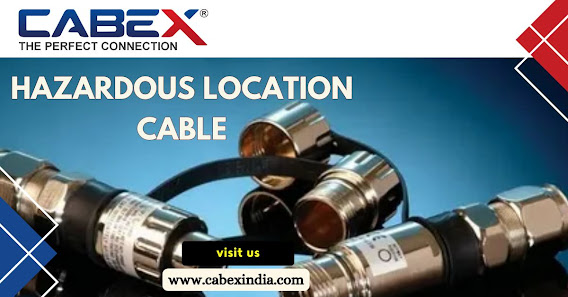Hazardous Location Cables: Engineered for Extreme Environments
Electrical safety becomes mission-critical in industries where explosive gases, dust, or vapors are present. In such environments, ordinary cables won’t do. You need Hazardous Location Cables—specially designed to perform under the most challenging and dangerous conditions without compromising safety, compliance, or performance.
Used extensively in oil rigs, refineries, chemical plants, and mining zones, these cables are crafted to meet stringent international standards, ensuring reliable power and signal transmission where failure isn’t an option.
What Makes Hazardous Location Cables Unique?
Unlike general-purpose cables, hazardous location cables are made with flame-retardant sheaths, thermally stable insulation, and chemical-resistant jackets. These properties allow the cables to operate in high-risk areas without degrading or triggering sparks due to insulation breakdown or short circuits.
They are:
-
Fire resistant and self-extinguishing
-
Oil, gas, and chemical resistant
-
Armoured or shielded for mechanical protection
-
Certified for ATEX, IECEx, or NEC Class I Div 1/2 compliance
Such cables come in various forms—control cables, instrumentation cables, and power cables—each tailored to the specific operational need of the hazardous site.
Role of Conduit Adaptors in Hazardous Areas
The performance of a cable in a hazardous environment also depends on how well it’s installed. This is where Conduit adaptors come into play. These accessories allow the connection between different conduit systems and cable glands while maintaining the explosion-proof nature of the enclosure.
Whether you’re transitioning between metric and NPT threads or connecting a cable gland to a rigid conduit, conduit adaptors ensure a perfect, sealed fit. They:
-
Eliminate mismatched connections
-
Provide mechanical stability
-
Preserve enclosure integrity
-
Support safe cable routing in explosive zones
High-quality conduit adaptors—especially those made from brass or stainless steel—are a must-have in flameproof or weatherproof setups.
Industries That Depend on Hazardous Location Cables
Hazardous location cables are used in:
-
Oil & Gas Facilities – Ensuring fail-safe control systems in high-risk zones
-
Mining Operations – Withstanding rough conditions and explosive gases
-
Petrochemical Plants – Supporting complex instrumentation systems
-
Pharmaceutical Manufacturing – Handling safe operations in solvent-rich environments
-
Power Plants – Providing robust, long-term energy distribution in extreme heat or moisture
In each of these sectors, cables and accessories must be selected with precision. Even the smallest compromise—be it a poor-quality gland or an ill-fitting adaptor—can lead to catastrophic results.
👉 Explore certified hazardous location cables, adaptors, and more at Cabex India – your trusted partner in industrial cable safety.
Safety Begins with the Right Product
Choosing hazardous location cables backed by certified conduit accessories ensures the safety, longevity, and efficiency of your operations. When you combine the right cables with top-grade conduit adaptors, you build a system that’s both compliant and dependable.



.jpg)
Comments
Post a Comment